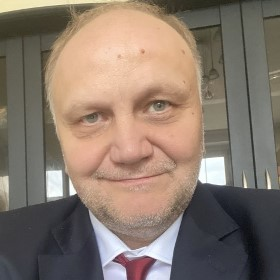Surface Inspection and Description in Metrology and Tribology (Second Volume)
A special issue of Materials (ISSN 1996-1944). This special issue belongs to the section "Manufacturing Processes and Systems".
Deadline for manuscript submissions: 10 May 2024 | Viewed by 12448
Special Issue Editors
Interests: surface metrology; topography; coordinate measuring technique; computed tomography; scanning
Special Issues, Collections and Topics in MDPI journals
Interests: tribology; surface metrology; topography
Special Issues, Collections and Topics in MDPI journals
Interests: axiomatic design; surface metrology; sports engineering
Special Issues, Collections and Topics in MDPI journals
Interests: surface engineering; tribology; friction; wear; lubrication; contact mechanics
Special Issues, Collections and Topics in MDPI journals
Interests: surface topography; roughness; surface modeling; tribology
Special Issues, Collections and Topics in MDPI journals
Interests: surface engineering; tribology; additive manufacturing; dimensional metrology, machining, robotics
Special Issues, Collections and Topics in MDPI journals
Special Issue Information
Dear Colleagues,
The primary goal of this Special Issue is to present recent trends in surface inspection and description, from both metrological and tribological points of view. Various research problems dedicated to surfaces in different scales will be discussed.
An important part of that is the techniques and methods that are and may be used for surface inspection and digitization (including free-form surfaces). These aspects are particularly important for Industry 4.0 and its purely metrological part, Metrology 4.0. Moreover, since we discuss topics related to measurements, uncertainty aspects need to be presented to know how satisfactory the accuracy of measurement is.
Another important topic is the separation of different frequencies, i.e., different ideas of filtration and multiscale approaches to analysis, including artificial intelligence. This is particularly important for bodies in contact, where tribological behavior and chemical processes on the surface are to be considered. Last but not least, surfaces are important in many different fields of science, often far beyond engineering topics. For this reason, all contributions closely related to applications are also welcome.
We welcome the submission of research papers as well as review articles. The research topics that we would like contributors to address include, but are not limited to, the following:
- Surfaces in different scales: micro, meso, and macro;
- Free-form surfaces and digitization;
- Description of surfaces;
- Modeling of surface topography and profile;
- Multiscale analysis of surfaces;
- Artificial intelligence issues for surfaces;
- Techniques and methods of surface inspection;
- Uncertainty in evaluation of surface features and parameters;
- Tribological behavior of surfaces;
- Applications of functional surfaces from engineering and non-engineering areas;
- Surfaces and Industry 4.0.
Prof. Dr. Michal Wieczorowski
Prof. Dr. Maxence Bigerelle
Prof. Dr. Chris Brown
Prof. Dr. Pawel Pawlus
Prof. Dr. Rafał Reizer
Prof. Dr. Alejandro Pereira
Guest Editors
Manuscript Submission Information
Manuscripts should be submitted online at www.mdpi.com by registering and logging in to this website. Once you are registered, click here to go to the submission form. Manuscripts can be submitted until the deadline. All submissions that pass pre-check are peer-reviewed. Accepted papers will be published continuously in the journal (as soon as accepted) and will be listed together on the special issue website. Research articles, review articles as well as short communications are invited. For planned papers, a title and short abstract (about 100 words) can be sent to the Editorial Office for announcement on this website.
Submitted manuscripts should not have been published previously, nor be under consideration for publication elsewhere (except conference proceedings papers). All manuscripts are thoroughly refereed through a single-blind peer-review process. A guide for authors and other relevant information for submission of manuscripts is available on the Instructions for Authors page. Materials is an international peer-reviewed open access semimonthly journal published by MDPI.
Please visit the Instructions for Authors page before submitting a manuscript. The Article Processing Charge (APC) for publication in this open access journal is 2600 CHF (Swiss Francs). Submitted papers should be well formatted and use good English. Authors may use MDPI's English editing service prior to publication or during author revisions.
Keywords
- surface metrology
- tribology
- wear
- coordinate measuring techniques
- scanning
- surface modeling
Related Special Issue
- Surface Inspection and Description in Metrology and Tribology in Materials (13 articles)











